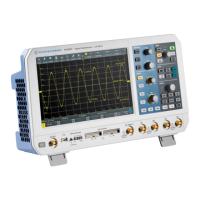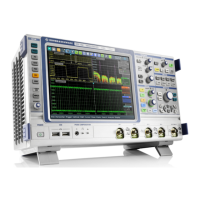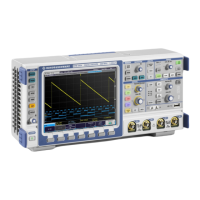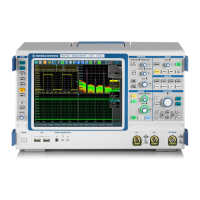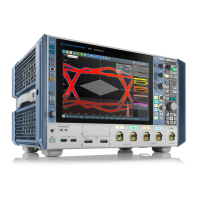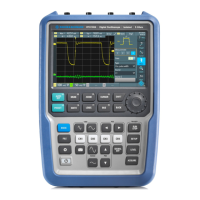Setting Up the Instrument
R&S
®
RTO2000
100Getting Started 1332.9719.02 ─ 08
Alignment of the touchscreen is useful:
●
At first use
●
If the position of the instrument has been changed, and you cannot look straight on
the screen
●
If another person operates the instrument
●
If you notice, that touching a specific point on the screen does not achieve the cor-
rect response
1. Press the [Setup] key.
2. Select the "Screen" tab.
3. Tap "Touchscreen Calibration".
A blinking cross appears in the lower left corner of the screen.
4. Touch and hold the cross until "OK" is shown.
5. Repeat this action for the crosses in the other corners.
6. Tap the R&S logo button in the task bar to display the instrument's user interface.
6.3 Setting the Display Language
You can change the language in which the dialog boxes, result boxes and other screen
information is displayed. A reboot of the instrument is not necessary.
1. Press the [Setup] key.
2. Select the "System" tab.
3. Tap the "Language" button. The button shows the current language.
4. Select the required language.
The instrument changes the language after a few seconds.
6.4 Adjusting Passive Probes
R&S RT-ZP10 passive probes are already pre-compensated to the R&S RTO front-end
characteristics, and a compensation procedure is not required.
If you use other passive probes, the R&S RTO allows you to compensate it when it is
connected to the instrument the first time. Compensation matches the probe cable
capacitance to the oscilloscope input capacitance to assure good amplitude accuracy
from DC to upper bandwidth limit frequencies. A poorly compensated probe reduces
the performance of the probe-oscilloscope system and introduces measurement errors
resulting in distorted waveforms and inaccurate results.
Adjusting Passive Probes
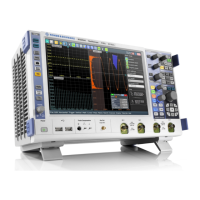
